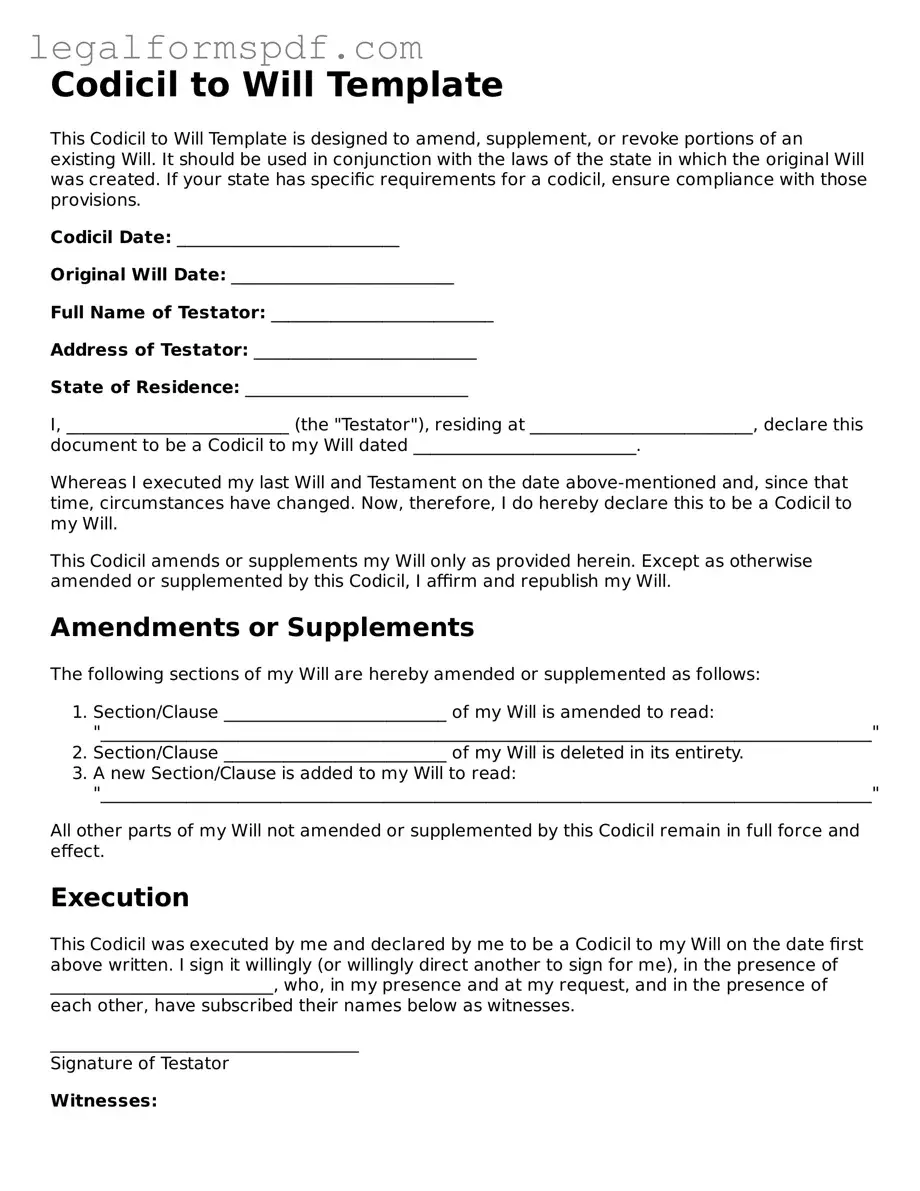Codicil to Will Template
This Codicil to Will Template is designed to amend, supplement, or revoke portions of an existing Will. It should be used in conjunction with the laws of the state in which the original Will was created. If your state has specific requirements for a codicil, ensure compliance with those provisions.
Codicil Date: __________________________
Original Will Date: __________________________
Full Name of Testator: __________________________
Address of Testator: __________________________
State of Residence: __________________________
I, __________________________ (the "Testator"), residing at __________________________, declare this document to be a Codicil to my Will dated __________________________.
Whereas I executed my last Will and Testament on the date above-mentioned and, since that time, circumstances have changed. Now, therefore, I do hereby declare this to be a Codicil to my Will.
This Codicil amends or supplements my Will only as provided herein. Except as otherwise amended or supplemented by this Codicil, I affirm and republish my Will.
Amendments or Supplements
The following sections of my Will are hereby amended or supplemented as follows:
- Section/Clause __________________________ of my Will is amended to read:
"__________________________________________________________________________________________"
- Section/Clause __________________________ of my Will is deleted in its entirety.
- A new Section/Clause is added to my Will to read:
"__________________________________________________________________________________________"
All other parts of my Will not amended or supplemented by this Codicil remain in full force and effect.
Execution
This Codicil was executed by me and declared by me to be a Codicil to my Will on the date first above written. I sign it willingly (or willingly direct another to sign for me), in the presence of __________________________, who, in my presence and at my request, and in the presence of each other, have subscribed their names below as witnesses.
____________________________________
Signature of Testator
Witnesses:
- Full Name: __________________________
Address: __________________________
Signature: __________________________
Date: __________________________
- Full Name: __________________________
Address: __________________________
Signature: __________________________
Date: __________________________
This Codicil to Will Template is not state-specific. If you are unsure if this template complies with your state laws, consult with a legal expert in your state.
